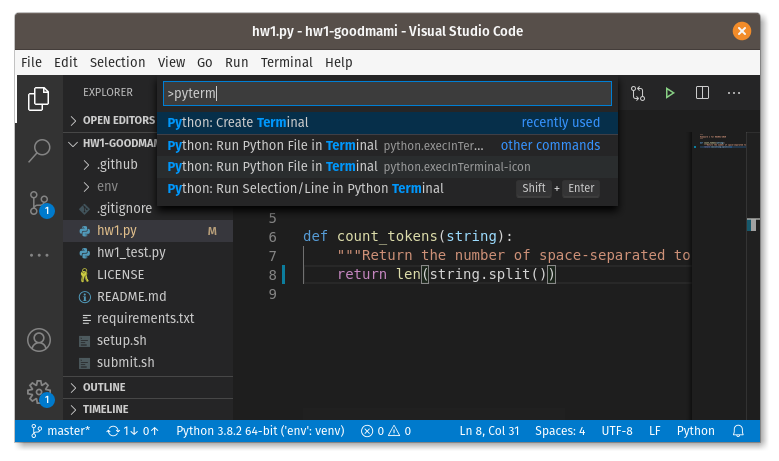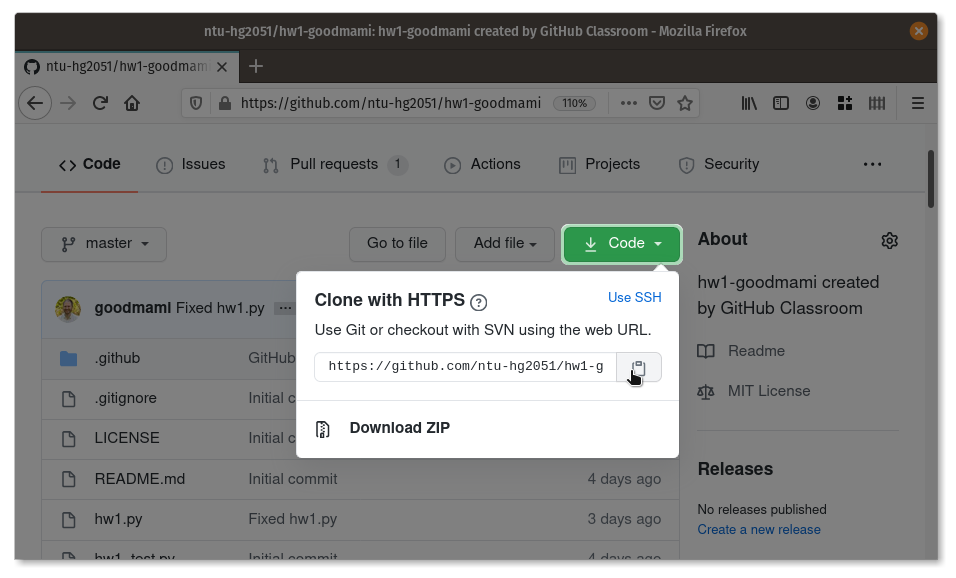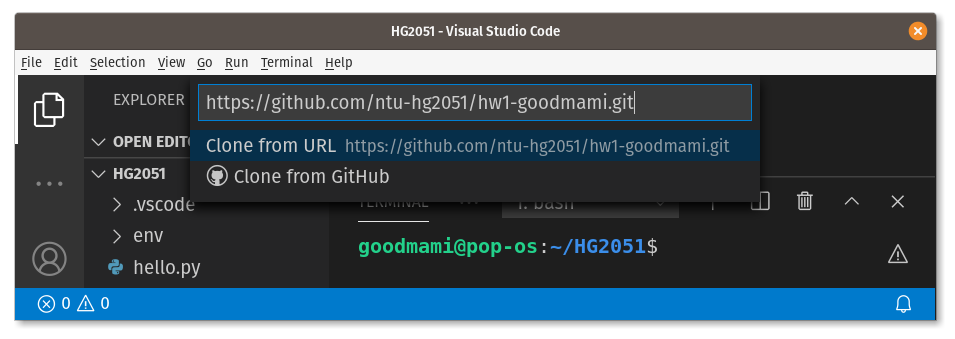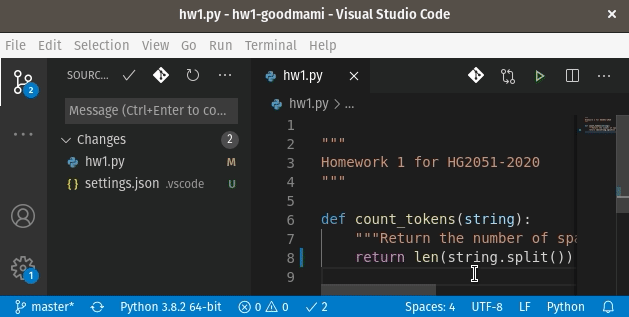Getting Started
There is a wealth of introductory information available at https://code.visualstudio.com/docs/, including guides and videos.
In addition, when you start Visual Studio Code and get the welcome screen, there’s a “Learn” section with some interactive ways to learn about the program from within the program.
The Command Palette
One feature I would like to point out is the “command palette”, which is opened by F1 on all platforms, or Ctrl-Shift-P on Windows/Linux or ⇧⌘P on macOS, or via the menu View > Command Palette. This acts like a search of menu items and allows access to some features not in the menus. In particular, when you have a Python interpreter selected, you can search for “Python: Create Terminal” (or some abbreviation, e.g., pyterm is probably sufficient), which opens a terminal with the appropriate virtual environment already active. Another useful command is “Python: Configure Tests”, which helps you setup pytest for testing your code.

Accepting Assignments
When you receive a link to accept a new homework assignment, you will be directed to GitHub and it will give you the URL of your newly created project. Now we can download (“clone”) the repository. From the project page, copy the URL of the Git repository via the green “Code” button:

Now go to Visual Studio Code and pull up the command palette. Type “clone” and select “Git: clone”, then paste the URL you copied and select “Clone from URL”. You may alternatively do “Clone from GitHub” and search for your repository by typing “ntu-hg2051/” and the name of the repository. In this case you don’t need to get the URL from the project page. Visual Studio Code will next ask you where to store the repository. This is the folder into which the repository will be cloned, so you should choose your “HG2051” folder.

Once it has downloaded, you’ll see its folder in the explorer sidebar. Visual Studio Code should ask if you wish to open the folder or add it to the current workspace. Please choose “Open” or “Open in New Window”. Please do not choose “Add to Workspace” as that will complicate our setup (it activates a feature called “multi-root workspaces” which we are not using).
Working on Assignments
With an assignment cloned and its folder opened in Visual Studio Code, you should now create a virtual environment for the assignment. Follow the instructions for creating a virtual environment, but using your assignment folder instead of “HG2051”. When you’re done, ensure it works by using the command palette to create a new Python terminal. You should see (env) at the beginning of the prompt.
At this point you should install the dependencies:
Set up Visual Studio Code for testing by opening the command palette and searching for “Python: Configure Tests”. For the testing framework, select “pytest”. For the testing location, choose . (root directory). If successful, you will see a beaker icon on the left. When you click that icon, you’ll get to the testing view. Click the “double-green-triangle” icon at the top of this view to run all tests. If any failed, the filenames will appear with a red “X” in a circle. Clicking on such a filename shows you the tests that failed in the editor area. Hovering over a red-squiggly line on the failed test will show you the exact error message.

To complete your assignment, edit the code in the main Python files (e.g., hw1.py) and run the tests again until more or all of them pass. When you’re satisfied, you can proceed to submit the assignment.
Do not edit the given test files (e.g., hw1_test.py). Changing the tests instead of the code may constitute academic dishonesty and can have severe consequences. However, it is acceptable and even encouraged that you augment the tests with your own. You should create a separate file for this, just ensure it has _test.py in the name, such as my_test.py.
Submitting Assignments
When you’ve saved some files in your assignment, you’ll notice the SCM icon (a Git graph with 3 nodes on the left) has a number in a circle indicating how many files have been modified. When you’re ready to commit some or all of those changes, click that icon to get the source-control view. Files with an M are “modified”, those with U are “untracked” (i.e., new to Git), and those with D are “deleted” (i.e., tracked in Git, but deleted locally). All of these changes need to be “added” to Git (even deleted files) in order to be recorded in the repository’s history. To add a change, hover your mouse over a file name and click the + icon to stage a change. When you’re finished staging changes, type in a commit message in the “Message” box and click the checkmark to commit. Once you’ve made one or more commits, don’t forget to “sync” the commits with GitHub by clicking the circular-arrow icon at the bottom of the window.
